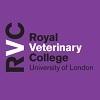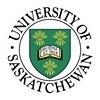Explore all the information on
Swine management
Pig production is the systematic rearing of pig breeds on scientifically based management principles for economic benefit. The main objectives of pig production are to provide consumers with pig meat and related products and to generate income for farmers.
Pig production plays a significant role in the livestock industry, providing an important source of protein and other valuable products. The systematic approach to pig rearing ensures that the pigs are healthy and well-cared for, which in turn leads to better quality products and higher yields. The focus on scientific principles and efficient management helps to reduce waste and increase profitability for farmers.
A swine producer who masters the art of good management has excellent profit opportunities. This is especially true with disease prevention and control. A healthy herd of good-growing, quality breeding animals — adequately fed and housed — provides maximum profit opportunities for the owner who does not over-spend for facilities and/or feed.
Introduction: Porcine reproductive and respiratory syndrome (PRRS) is among the diseases with the highest economic impact in pig production worldwide. Losses due to the disease were estimated as high as 560 Mio. US$ per year in the USA. Yet, the economic impact of the disease at farm level is not well understood as, especially in pig herds chronically infected with PRRS virus, the losses caused are often not obvious for farmers and veterinarians Thus, the aim of this study was...
Comments : 0
Recommendations: 0
Oliver Stringer (Department of Infectious Disease, Imperial College London) explained this alternative to PCR for APP detection, during IPVS2022 in Rio de Janeiro, Brazil....
Comments : 0
Recommendations: 0
Maria Pieters (University of Minnesota) talked about protocols and how to make them faster and more effective, during IPVS2022 in Rio de Janeiro, Brazil....
Comments : 0
Recommendations: 0


A Natural Choice for Growth Enhancement in Farm Animals - 3 ESSDENDIS
Suggested link
Maria Pieters (University of Minnesota) discussed different strategies to control this disease and the importance of minimizing its impact, during IPVS2022 in Rio de Janeiro, Brazil....
Comments : 0
Recommendations: 0
Johannes Kauffold (University of Leipzig) talked about conception rate and the way to use data to understand what happens on the farm, during IPVS2022 in Rio de Janeiro, Brazil....
Comments : 0
Recommendations: 0


Selecting the Correct Methionine Source – A Key Index for Successful Pig Production
Suggested link
John Carr and Jonathan van Dissel (Apiam Animal Health, Australia) discussed an outbreak case and its consequences, as well as producers' concerns, during IPVS2022 in Rio de Janeiro, Brazil....
Comments : 0
Recommendations: 0
Jeroen Dewulf (Ghent University) talked about Biocheck, a risk-based scoring system developed to measure the level of biosecurity at animal farms, during IPVS2022 in Rio de Janeiro, Brazil....
Comments : 0
Recommendations: 1
Introduction Molecular serotyping and LS-PCR are valuable and practical tools for Glaeserella parasuis characterization (1, 2). Early in 2020, and due to the forced postpandemic closure, several swine production systems in Peru reported clinical cases of G. parasuis, and a total of sixty-eight qPCR-positive microbiological isolates of clinical cases were obtained over two years. The objective of this study was to identify the circulating serotypes,...
Comments : 0
Recommendations: 0
Jeroen Dewulf (Ghent University) explained the impact of improving biosecurity and how to balance resources and needs to make it feasible, during IPVS2022 in Rio de Janeiro, Brazil....
Comments : 0
Recommendations: 1
Bruno Silva (Universidade Federal de Minas Gerais) explains the need to adapt feeding programs to the characteristics of young and adult sows, during IPVS2022 in Rio de Janeiro, Brazil....
Comments : 0
Recommendations: 3
John Morris Fairbrother (Université de Montréal) discussed the use of these methods in his research on Escherichia coli in pigs, during IPVS2022 in Rio de Janeiro, Brazil....
Comments : 0
Recommendations: 0


A Natural Choice for Growth Enhancement in Farm Animals - 3 ESSDENDIS
Suggested link
Heather Wilson (University of Saskatchewan) talked about the development of vaccines and how to immunize, during IPVS2022 in Rio de Janeiro, Brazil....
Comments : 0
Recommendations: 0
Fernanda Almeida, Chair of the IPVS2022 Congress, talked about some of the highlights of the research presented in Rio de Janeiro and how important it was for the industry and the experts to get together again....
Comments : 0
Recommendations: 0


Selecting the Correct Methionine Source – A Key Index for Successful Pig Production
Suggested link
Ken Stalder (Iowa State University) shared the percentage he considers necessary, during this Swine It interview with host Laura Greiner....
Comments : 0
Recommendations: 0
Daniel Linhares (Iowa State University) shared his insights on indicators and methods for monitoring this disease, in this Swine It interview with host Laura Greiner....
Comments : 0
Recommendations: 0
Ken Stalder (Iowa State University) shared his insights regarding swine producers' needs to then develop tools, during this Swine It interview with host Laura Greiner....
Comments : 0
Recommendations: 0
Daniel Linhares (Iowa State University) talked about virus detection and research results on PRRS outbreaks, in this Swine It interview with host Laura Greiner....
Comments : 0
Recommendations: 0
Jay Johnson (USDA) talked about behavior and feed intake when monitoring possible heat stress, in this Swine It interview with host Laura Greiner....
Comments : 0
Recommendations: 0
Ken Stalder (Iowa State University) talked about the different values taken into account, during this Swine It interview with host Laura Greiner....
Comments : 0
Recommendations: 0

























